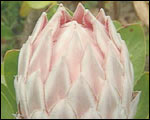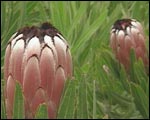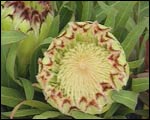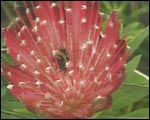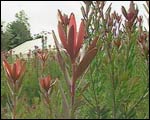Protea timeIt's the optimum time to be planting proteas. One protea grower shares her tips on growing this revered plant.
Sharon McNabb traded in a life of bright lights, late nights and Auckland's hustle and bustle for the good life in Northland's Matakana, growing proteas. Proteas had always been a favourite with Sharon's family, although when growing up she didn't know too much about the revered flower. "I didn't know much about protea at all. I'd spent a long time in horticulture, but not actually come across protea before."
Sharon started by planting 10 different varieties of the protea plant to see which ones lasted. Following winter, she then planted 1200 bushes. Starting out, Sharon found the weather a challenge, particularly wet summers. "And then just getting your head around the market — what to do, when to send, when to pick. "We were a bit like the
tortoise and the hare — we plodded along, did things on a small
scale. Made mistakes on a small quantity, which was better than
mistakes on a big quantity." One of the most common proteas in New Zealand is neriifolia. "This is neri Pink (above right). Everybody's grandma had one of those." Limelight is another favourite (right), as is the New Zealand-bred protea Clark's Red (below right). A particular favourite of Sharon's is the red-stemmed roupelliae.
"It's a beautiful protea called roupelliae. It'll handle slightly more tropical conditions than the average protea. Flowering about November/December." Leucadendron Safari Sunset is another old favourite with its beautiful rich colouring. Choosing Your Protea As proteas are coming into flower now, it's a great time to see what new varieties are available as it's the optimum time to be planting proteas.
Choose something that's really bushy, as they flower on the current season's wood — the flower head will come there. Planting Your Protea
|
Home | Journal
| Newsletter | Conferences
Awards | Join
RNZIH | RNZIH Directory | Links
© 2000–2025 Royal New Zealand Institute of Horticulture
Last updated: October 25, 2007


